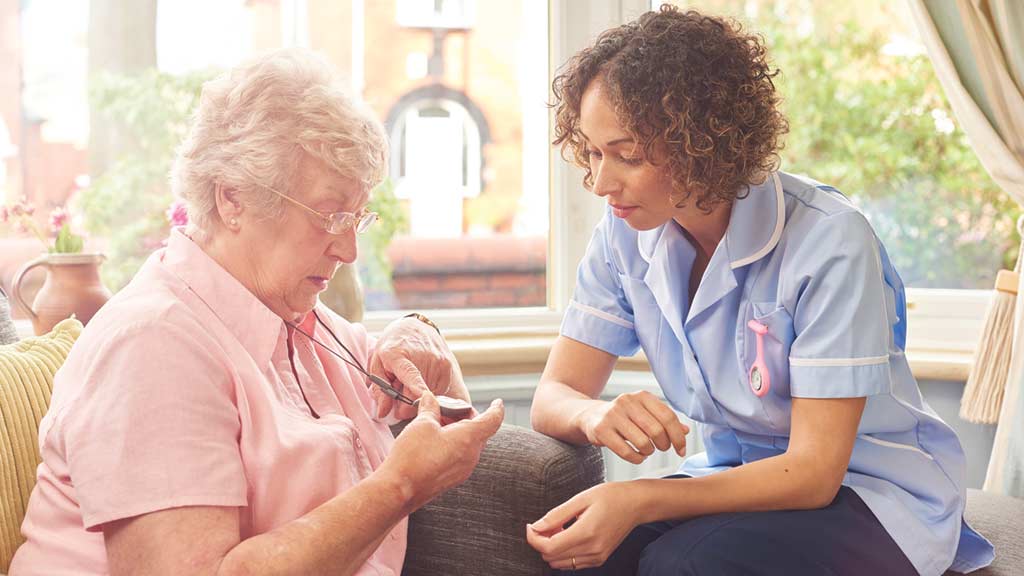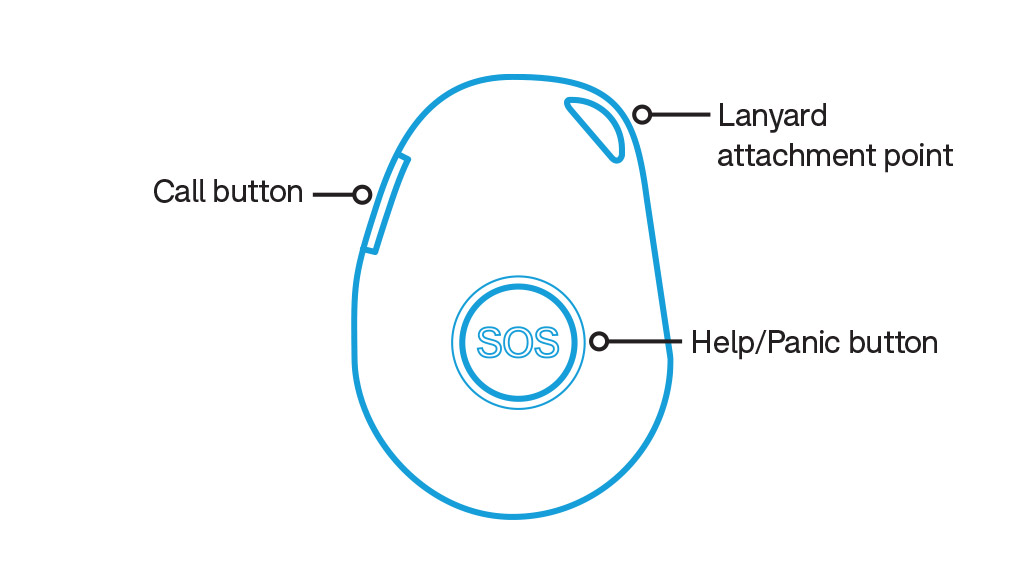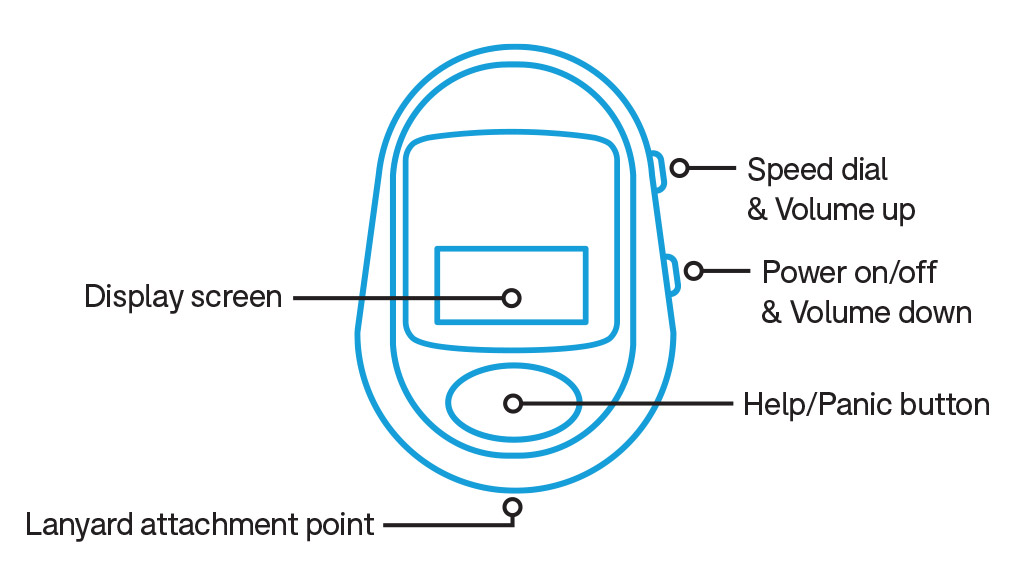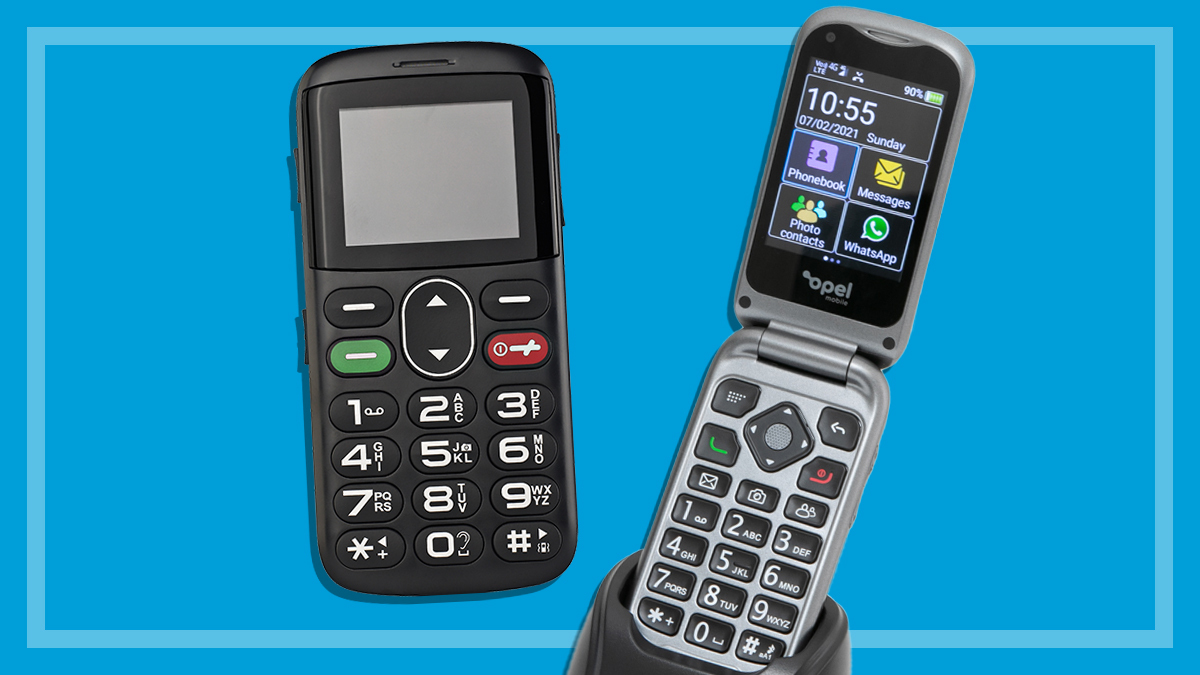Get our independent lab tests, expert reviews and honest advice.
What to know before buying a personal alarm

Personal alarms are primarily advertised as products that can provide life-saving emergency communication for the elderly when they have an accident. But these devices, which are also known as life or safety alarms, can also help protect children, solo workers, those living independently with a disability and even people recuperating after surgery or illness.
On this page:
- How do personal alarms work?
- Why we don't recommend personal alarms
- What are the different types of personal alarm?
- How much do personal alarms cost?
- Do you need a personal alarm subscription?
- Important safety features to look for
- Do personal alarms protect your privacy?
- What's the best personal alarm for the elderly?
- What's the best personal alarm for children?
When these small devices are triggered they are designed to send an emergency alert to pre-set mobile phone numbers or a 24-hour monitoring service. Many personal alarms also perform other functions such as location tracking, automated location updates and some even let you install additional entertainment apps.
But despite the advertising, some test results and feedback from our members show that personal alarms may not be as safe as they claim. We tested personal alarms for several years and were disappointed with the results, consistently finding these products to be unreliable and difficult to use.
So concerned were we by the inconsistent performance of a product bought explicitly for safety that we have decided to no longer publish these reviews.
How do personal alarms work?
A personal alarm is always on and monitors three key things:
- the wearer’s position using GPS
- any increases in speed (indicating the wearer is in a car or on public transport)
- sudden movements followed by no movement (indicating a possible fall).
You can program the personal alarm to regularly update you with the wearer’s coordinates via text, or alert you if it detects an incident such as a fall, or if the wearer leaves a pre-determined area near their home.
They also include an SOS button for the wearer to press and send an immediate alert to a call centre (if you have a subscription-based personal alarm) or a list of contacts that you can program into the device. This SOS button can also send a text message.
Personal alarms are often used by nurses, parents, carers and their patients and children. Patients and children can quickly and easily alert others if they require attention, typically if they’re lost or injured. Workers also use them on construction sites, especially if they’re alone in a remote or confined location.
Why we don’t recommend personal alarms
As an organisation that tested these products, we feel we have a duty to inform you of which products reasonably meet their claims, and which do not. However, we do not recommend any personal alarms.
We conducted real-world tests when assessing personal alarms, which are designed to replicate consumer usage during day-to-day life. But experiences are subjective, and we’ve received a number of emails from members detailing how their personal alarms were faulty or didn’t work as advertised. These complaints occurred across a number of brands and models, which we feel points to problems with the personal alarm industry as a whole.
We’ve received a number of emails from members detailing how their personal alarms were faulty or didn’t work as advertised
Responsible supplier certification
Products that connect to mobile networks must be compliant with the Australian Communications and Media Authority (ACMA) requirements for suppliers. This includes personal alarms. To be compliant, the seller or their agent must be registered as a responsible supplier in the National Equipment Registration System (NERS) database. Without this registration, there’s no way to confirm that the seller’s products are safe.
Some personal alarm companies offer 24-hour monitoring for a monthly or annual fee. Though we haven’t tested these services, our personal alarms expert, Scott O’Keefe, used one named VitalCall to assist with caring for his independent mother.
24-hour monitoring services are supposed to be better than the self-activated alarms, but Scott’s mother faced unacceptable difficulties with the service during a personal emergency. This is just one case study, but it echoes the experiences supplied by our members who have used self-activated alarms.
Scott’s experience with VitalCall
“My mother had terminal cancer, and was receiving palliative care through a hospital specialist team. She was in and out of the hospital, but still living at home. Because my father had been moved into aged care, the hospital team recommended that my mother sign up for VitalCall in case she needed to call for assistance and wasn’t able to get to the phone.
I arranged the VitalCall contract, and an installer came out to my mother’s home to set up the unit, test everything out, and complete the necessary paperwork. I was there during that visit.
The palliative care team made it very clear that we were to provide specific instructions to VitalCall with regards to the way in which their call centre was to handle any calls. Basically, the instructions were that the palliative care team (24/7 on-call number provided) must be the first party contacted by VitalCall, and that under no circumstances should VitalCall arrange for an ambulance without first speaking with the palliative care team. I made it very clear as the paperwork was being completed that these procedures be recorded and adhered to by VitalCall.
The reasons for this were straightforward. The palliative care team was across the complex pain management needs of my mother, as well as her history of cancer treatment. If an ambulance were called by VitalCall, the paramedics would be obliged to take my mother to the nearest emergency department, and once there, it would be difficult to have her relocated to the slightly more distant hospital for access to her palliative care team.
My mother used the VitalCall service once. Unable to move, she activated the VitalCall unit and spoke to the call centre operator. The call centre arranged for an ambulance (they did not contact the palliative care team), and despite my mother’s pleas to the paramedics, they had to follow protocol, and she was taken to the nearest hospital rather than the one with her palliative care team. As a result, my mother spent hours without the specialist palliative care that she should have received.
I made a complaint to VitalCall and we received a full refund of all costs associated with the contract with them.”
What are the different types of personal alarm?
There are two basic personal alarm options: a pendant you wear around your neck and a smartwatch worn on your wrist.
Both pendants and watches usually have all of the communication, emergency response and tracking features mentioned above, but watches can be a bit more difficult to use due to the touch screen. At the same time, they can offer additional features you’d find in a smartwatch, such as support for third-party apps.
Our test results found that many models follow the same pendant or smartwatch design. This suggests that physical components are pumped out by the same manufacturers and sold to small retailers who are free to create their own software and apps. These elements, rather than physical functions, tend to be the deciding factors in finding a personal alarm that suits your needs.
Pendant without a screen
Basic pendant models have a large SOS button that’s easy to press during an emergency, as well as individual call buttons on the side. Though simple, models like this don’t have a screen to provide feedback on things like remaining battery charge, who you’re calling, mobile signal strength and so on.

Pendant with a screen
These are very similar to the basic pendant models but the screen will provide some basic status updates. This can add some extra weight (usually 10–20 grams) and may reduce battery life.

Smartwatch design
These look and feel like a smartwatch, which is a bit more inconspicuous than a pendant hanging around your neck. They use a touchscreen interface and may also have a small SOS button on the side. You can often customise the appearance with a variety of watch faces, and even install additional apps such as Spotify on some models. Settings, contact menus and more are also much more detailed.
But they can be hard to use if you have limited dexterity, particularly in the event of an emergency like a fall. It’s much easier to press a big SOS button than scroll through a list of contacts for example. Also the screen is typically quite small and it can be hard to read the text and tap the correct icon.

How much do personal alarms cost?
Prices range from $140 up to almost $500, which may not include the price of the SIM card or optional subscription service.
For a device that could very well save the life of a relative or friend, personal alarms are an expensive option in Australia.
Where to buy personal alarms
We found that almost all personal alarms are sold online, or through small businesses specialising in aged care. However, you may find that nursing homes, hospitals and senior community groups have partnerships with particular brands.
We also checked on a large shopping website based in China and found some identical looking, and similarly featured devices to ones available in Australia for around $80.
The bad news is they have no local support and instructions (if they exist), may not work with local SIM cards and may not be in English. Locally-sold products are more likely to have software and set-up support, which our testers put a high value on. After working with these products for a few years, we found the out-of-box experience generally leaves a lot to be desired.
Though the cost is high, if you are dead set on purchasing one, we recommend buying personal alarms locally.
How to get a personal alarm for free
The Commonwealth Home Support program provides government support for individuals that need access to services and financial assistance, required for independent living as they age. Some personal alarms are available for free, or at a reduced rate, through this program.
The National Disability Insurance Scheme (NDIS) can also provide funding and veterans can also receive support through their own government program. Community services and even manufacturers may offer financial support and solutions as well, though this varies and tends to exist on a case-by-case basis. Health insurance providers may also offer support or reimbursements of some kind so it’s worth asking, but this isn’t standard practice.
Do you need a personal alarm subscription?
Most personal alarms are designed to alert a pre-selected contact. But some can connect to a 24-hour call centre if you’re prepared to pay a fee – typically between $20 and $40 per month. There’s always a chance you could miss a phone alert due to the time of day (e.g. sleep hours), poor reception, or something as simple as forgetting your phone is on silent. Subscription services can solve this problem and others.
They offer constant monitoring for a variety of circumstances, such as the full gamut of alerts offered by the alarm, including SOS button, fall alerts, GPS monitoring and two-way communication. They also reach out if they notice a change in the user’s typical behaviour (e.g. walking in unfamiliar areas or lack of movement). When an alert comes in, call centres will quickly assess the seriousness of the situation to determine whether relatives or emergency services need to be contacted.
We don’t cover any 24/7 personal alarms because of the complexity involved in the testing.
Were we to test them, each manufacturer’s monitoring system would need to be tested, which means they would know they were being tested by CHOICE. This could bias results, as we cannot mask contact to an emergency service, and we can’t risk a monitoring service knowing that CHOICE is testing them.
Even if we could mask our contact details (which is difficult as you need to register upfront), making false emergency requests is unethical. We could advise them all that we were testing them and just accept the fact that the results would be potentially biased across the board, but the project management process for notifying each monitoring system of an incoming false call would be quite complex. We wouldn’t want to throw out their regular business-as-usual circumstances.
This is why we’ve focused on the non-24/7 monitoring devices.
Do 3G personal alarms still work?
Though 3G only personal alarms will continue to work for now, their days are numbered. Vodafone will turn off its 3G network in mid-December, followed by Telstra in June 2024 and Optus not long after in September.
We can’t guarantee that they’ll keep working once the 3G networks have been turned off. Even though mobile data is mainly used to improve GPS accuracy, the shutdown will likely affect the device’s ability to make calls and texts as well. After all, 2G phones stopped working altogether when that network ceased operation and 3G devices may follow suit. This means you will need to replace your personal alarm if it can only connect to 3G.
Fortunately, it appears that 3G models are no longer being sold by the suppliers last time we checked. That said, there may still be some kicking around online, especially on the second-hand market. If you come across a deal that seems too good to be true, make sure it can connect to 4G before buying.
Important safety features to look for
Battery life
A longer battery life is useful if you forget to charge it up overnight. Ideally, a personal alarm should have an active (in-use) battery life of 24 hours, or enough to get you through a day at the very least.
Charging cradle or magnetic dock
Putting your personal alarm in a charging cradle is much easier than fiddling with a cable, especially if you have limited dexterity. That said, some models (including pendants and watches) have magnetic connectors that make it easier to plug the cable in.
Fall detection
This sends an alert when the device falls rapidly. This is useful if the device is with someone with a fall risk.
Responsible supplier certification
Products that connect to mobile networks must be compliant with the Australian Communications and Media Authority (ACMA) requirements for suppliers. This includes personal alarms. To be compliant, the seller or their agent must be registered as a responsible supplier in the National Equipment Registration System (NERS) database. Without this registration, there’s no way to confirm that the seller’s products are safe.
Geo-fencing
When you have responsibility for someone who wanders, you might want to be alerted when that person goes outside of their known areas. Geo-fencing works by setting up a virtual fence. When the device crosses this virtual fence, the device sends an alert to a contact.
Geo-fencing has two settings: radius, which creates a virtual fence in a circle, and polygon, which is a bit more flexible than the radius as it means you can create a map that allows for some freedom (e.g. providing access to a nearby park).
GPS location
This is designed to track the user while they’re carrying the device. But the effectiveness of GPS location can be reduced by tall buildings, dense developments and being inside buildings. Some let you track movement in an app while others will provide GPS coordinates via text. You can set the frequency of these alerts, usually in five or 10-minute blocks (ping frequency).
Non-movement alarm
This alerts a contact if the device doesn’t detect movement for a specified amount of time.
Number of contacts
Look for a personal alarm that accepts more than one contact. The more contacts you have, the better. The alarm will automatically cycle through them until someone answers.
Ping frequency
This refers to GPS monitoring, and most models fall into one of three categories: frequent alerts, occasional alerts, and alerts when the device leaves a geo-fenced boundary. A good quality alarm will let you pick one of these options. Greater ping frequency consumes battery power at a faster rate, which could render the alarm useless by the end of the day.
Speed alarm
If the device starts moving rapidly, say by the wearer getting into a car or onto train, it alerts a contact.
Water and dust resistance
An ingress protection (IP) rating is the best way to identify whether a personal alarm is dust and water resistant. The first digit applies to particulate protection (dirt, dust etc.) and the second refers to moisture protection.
Generally speaking, higher numbers equal a greater level of protection. However, this doesn’t always apply to moisture protection. Some ratings refer to directed water such as spray, rain or jets, while others protect against submersion. Also, a product’s IP rating is measured in pure water, so the introduction of other things such as soap, detergent or mud could affect IP performance, in theory.
We suggest looking for a personal alarm with a rating of IP66 or IP67. IP66 claims to provide complete protection against dust and powerful water jets. IP67 is the same for dust, but protects against submersion in water for up to 30 minutes, at a depth of up to one metre. While an IP67 model may be fine in the shower, the submersion test can’t guarantee this.
Some products use generic terms like ‘splash proof’ or ‘shower proof’ but these are relatively meaningless without an IP rating. A few manufacturers also sell protective casing or bags if you want an extra level of water and dust resistance.
Do personal alarms protect your privacy?
As the name suggests, personal alarms require a lot of personal data. The account requires a number of details to activate the SIM card (though you can get around this by installing your own in some cases). They need to track your movements and, in some cases, access data in your phone in order to function.
This isn’t an issue in itself, but we’ve come across a number of personal alarms with fairly lax security. If you want the supplier to set up a SIM for you, they’ll need details like your name, address and date of birth. Some gather this by asking you to fill in and return a Word document or PDF, rather than a secure online form.
Some companies that connect to the cloud don’t specify if or how your data is encrypted
Similarly, some companies that connect to the cloud don’t specify if or how your data is encrypted. Apps often lack this information as well. It’s not uncommon to encounter default passwords that are identical across a number of different models and brands. This is the kind of thing hackers go after. We found one particularly bad example during a test. It created an account for the personal alarm which linked to a seemingly unrelated mainland Chinese news website.
Before you buy, look into the privacy policy and any information regarding data protection. Call the company if you’re still unsure and confirm that they have data protection measures in place. If they don’t provide this information, do not buy their product. It’s not worth the risk.
What’s the best personal alarm for the elderly?
This depends on a number of physical and mental health factors, so please understand that our advice is a broad starting point. It’s best to consult with your (or the wearer’s) GP before buying.
If the wearer is in a good physical and mental state but wants a personal alarm for peace of mind in the event of an emergency, then a pendant or touchscreen watch will be fine. A model with GPS is also worth looking into if the wearer is often out and about by themselves, as this will allow you to pinpoint their location if something happens. Just understand that a touchscreen watch can take time to learn, particularly if the wearer hasn’t used a smartwatch before or spent a lot of time with a smartphone.
If the wearer has limited dexterity due to conditions such as arthritis, or they have vision impairment, go for a pendant with a large SOS button. Small touchscreens can be hard to see and navigate which could be life threatening in an emergency.
Geo-fencing features allow the wearer to retain independence while providing a safety net should something happen
Those with limited mobility, movement difficulties or fall risks (which includes seizures) should consider models with good quality fall detection. This can activate an alarm if they’re unable to do it themselves or they lose consciousness. Some models will also send an alert if they don’t detect movement for a predefined period of time.
Mental health and memory-related symptoms can present other complications, particularly if the wearer doesn’t have physical limitations. In this case, it’s best to talk to them about places they regularly go (the shops, cafes etc.) and determine regular walking routes. Then, you can suggest a personal alarm that will provide alerts if they leave these areas.
Geo-fencing, automatic tracking and speed tracking can be very useful in these circumstances. They allow the wearer to retain independence while providing a safety net should something happen and they’re unable to communicate. In terms of whether a pendant or watch is better, this is really up to the individual and whether they have the capacity to understand and recall the steps required to use a smartwatch-style device.
In all cases, look for a model that is advertised as water resistant, waterproof or better yet, has an IP rating of IP67. This will protect it from all dust and liquid elements someone is likely to encounter day to day, and is also suitable for use in the shower. IP67 should also keep it safe if the wearer drops the pendant in shallow water such as a puddle, a sink or the toilet.
What’s the best personal alarm for children?
The type of personal alarm you need for your child will be influenced by whether you want to communicate with your child or track their location. If you want to communicate with them, consider a personal alarm watch with a kids’ focus.
These alarms have a child-friendly interface and usually look like a smartwatch (so the child doesn’t need to wear a pendant). They limit functions to communication (e.g. no additional apps, social media services or ability to contact people outside the set list of contacts). They allow two-way communication and they’re typically low cost due to the increased chance of loss or damage.






